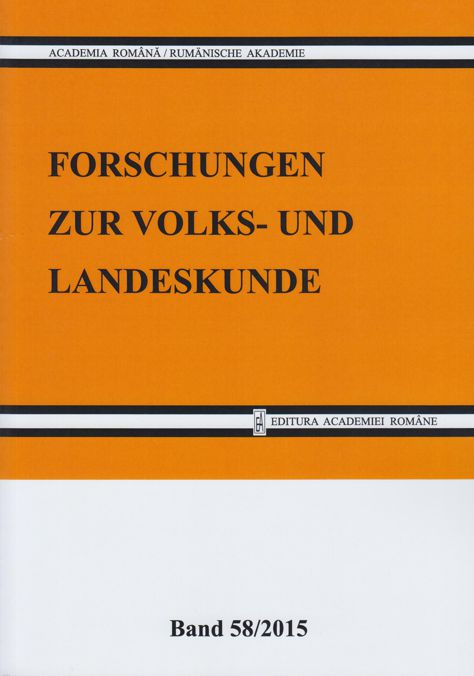Zu adjektivischen Wortgruppenderivaten "Zusammenbildungen" mit substantivischem Kern und Suffix -ig (mal -iχ ) im Siebenbürgisch-Sächsischen
Adjectival word formations (with noun nucleus) in Transylvanian-Saxon, with -ig Suffix, -iχ in dialect
Author(s): Sigrid HaldenwangSubject(s): Theoretical Linguistics
Published by: Editura Academiei Române
Keywords: Transylvanian-Saxon; idiomatic material; first immediate constituent; second constituent; explicitly adjectival suffix derivative; word group, word building construction
Summary/Abstract: The linguistic peculiarities of the Transylvanian-Saxon tongue identifies it as a Midwestern German, more specifically a Mid Franconian dialect, which has acquired mid-eastern and upper German elements during its development in Transylvania. This dialect shows many similarities with the dialects spoken in the area between Cologne and Trier, as well as in Luxembourg.The type of word formation is treated and defined differently in the linguistic literature of Standard German. This can be proven through the use of various linguistic theories. Based on the idiomatic material, adjectival formation can be defined as “an explicitly adjectival suffix derivative where the first immediate constituent (IC) is a word group, and the second constituent is the suffix [for example: “finehearted” (goodhearted) < fine heart; “lefthanded” < left hands; five-fathomed” (five fathoms length) < five fathom; “onepelt” (cut from one single pelt) < one pelt].The result of the adjectival formation is a descriptive and linguistically economical word building construction.
Journal: Forschungen zur Volks- und Landeskunde
- Issue Year: 2015
- Issue No: 58
- Page Range: 144-158
- Page Count: 15
- Language: German
- Content File-PDF

